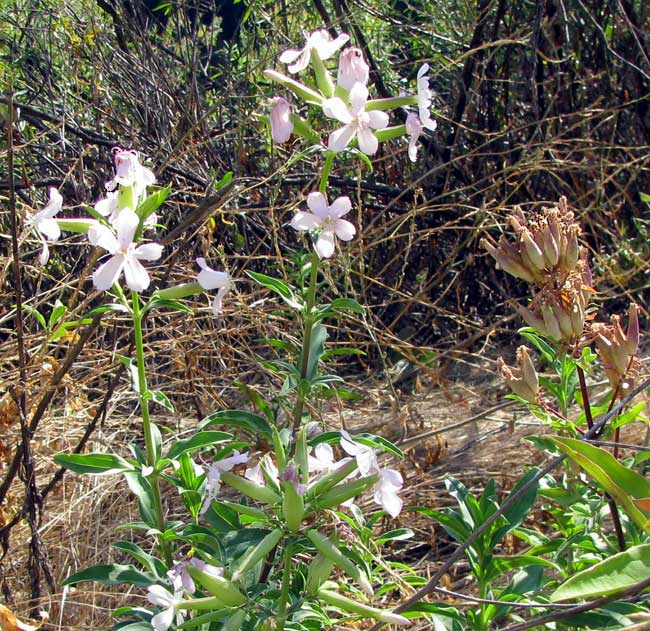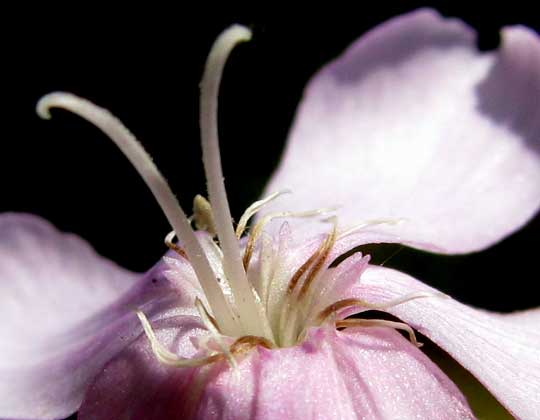Excerpts from Jim Conrad's
Naturalist Newsletter

from the the September 27, 2009 Newsletter, issued from the Siskiyou Mountains west of Grants Pass, Oregon:
SOAPWORT
A blooming wildflower on a weedy sand bank beside the Rogue River caught my eye. Nowadays most herbaceous plants are either fruiting or dried up and dead. In fact, to the right of this plant rose clusters of maturing capsules from an earlier flowering, as you can see above.
It was the Soapwort, sometimes called Bouncing Bet, SAPONARIA OFFICINALIS, a member of the Pink Family, the Caryophyllaceae, like phloxes and chickweeds. It'd been awhile since I'd seen such a gaudy wildflower so I sat down next to it and took my time admiring how sunlight vividly lit up its pinkish blossoms. Up close each blossom revealed interesting details, shown below:

In that picture the two slender items curving out from the flower mouth are the ovary's styles -- "necks" connecting pollen-receiving stigmas to the ovule-bearing ovary. They're female parts, then. Surrounding the mouth is a thicket of slender things, in twos. The brownish ones are old filaments -- the stamens' "stems" which hold up the baglike, pollen producing anthers. They're male parts, then. Between the filament pairs lie pairs of shorter, pinkish, fingerlike things. Botanical literature refers to those noncommittally as appendages or claws. They're just growths the likes of which appear a lot in this family, and I suppose they aid in pollination. For example, if you were a small bee landing on a petal, working toward the flower's mouth, you might appreciate having a "claw" to grab onto.

Above I've opened a flower so you can see how the styles arise from atop the green ovary deep down in the blossom's bottom. On the ovary's green walls you can see bumps caused by ovules inside the ovary. Ovules are the future seeds.
These perennial plants are called soapworts because soap can be made from them. Though I read that the soap is best made by boiling the whole plant, especially the roots, I've made a passable green, cleaning suds just by kneading green leaves with a little water in my hands. I tried to get some suds from this plant but it must have been too dry so I got only a few green bubbles.
Soapwort is invasive from Europe. In Europe it's been used as a traditional medicinal herb since the time of Dioscorides. Decoctions of the herb can be applied externally to treat itchy skin, and the ancients used it for a broad range of ailments. However, the plant is poisonous, destroying red blood cells and causing paralysis of the vasomotor center, a portion of the brain's medulla oblongata, regulating blood pressure.